#Bartolomé Estebán Murillo
Photo
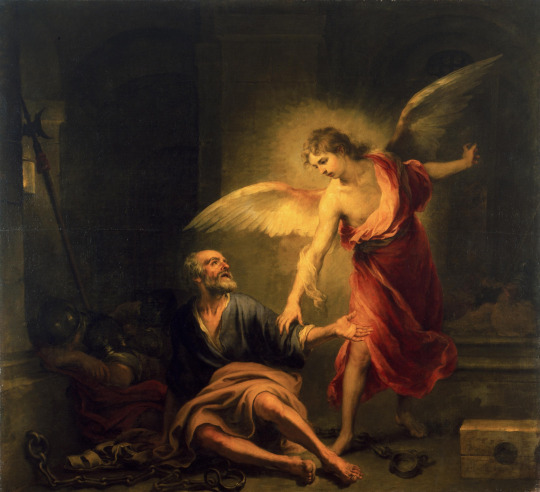
Bartolomé Estebán Murillo (Spanish, 1617 - 1682)
Liberation of St Peter, ca. 1665 - 67
#liberation of saint peter#liberation of st peter#Bartolomé Estebán Murillo#spanish#spanish art#christian art#european art#mediterranean#iberian#iberia#iberian peninsula#art#fine art#christian#christianity#catholic#angel#saint peter#st peter
151 notes
·
View notes
Text

Bartolomé Estebán Murillo (Spanish, 1617-1682) The Mystic Marriage of Saint Catherine (1680-1682)
#Bartolomé Estebán Murillo#catholicism#mystical marriage#catholic saints#saint Catherine#Beata Vergine Mary#Jesus Christ#Gesu` Cristo#Holy Mother of God#Santa Madre di Dio#Sacred Art#arte sacra
0 notes
Text

“The Crucifixion” by Bartolomé Estebán Murillo
This oil sketch helped Murillo to prepare a large painting that is today in the Museo del Prado in Madrid. The artist’s characteristic smoky atmosphere, achieved through rough paint handling and masterful distribution of light, creates an ideal image for devout meditation at this small scale: the sun has set, the cloudy sky is streaked with moonlight, Christ’s body falls limp, and Jerusalem can be seen in the dim distance. This intimate canvas is possibly the same "little Crucifixion" owned by Sebastián Martínez (1747–1800), whose portrait by Goya is also in The Met collection
9 notes
·
View notes
Text

"So I pray to hands, and I pray to needs. And I pray to blades of grass to find forgiveness in the weeds."
- Danny Schmidt
Day 2 of ThorNute Week '24 - Worship / Role Reversal
Pose inspired by "Worship of the Female Form" by Alméry Lobel-Riche. But I also took inspiration from "The Crucifixion" by Bartolomé Estebán Murillo.
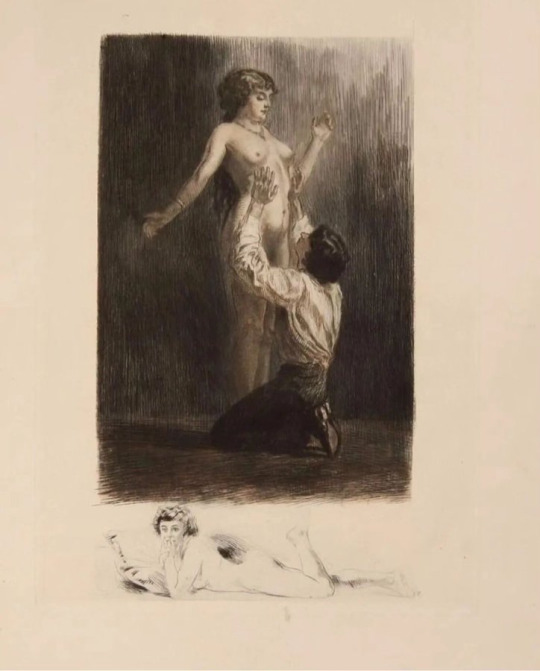

#saturn sketches#artistic nudity#vinland saga#thornuteweek24#thornute#thorfinn#canute#something simpler because i'm busy rahhh
5 notes
·
View notes
Text
'El buen Pastor' c.1675-82
🎨Bartolomé Estebán #Murillo (Sevillano y #Terciario franciscano
Se le conoce como el pintor de los niños por las caras aniñadas) 1617-1682)
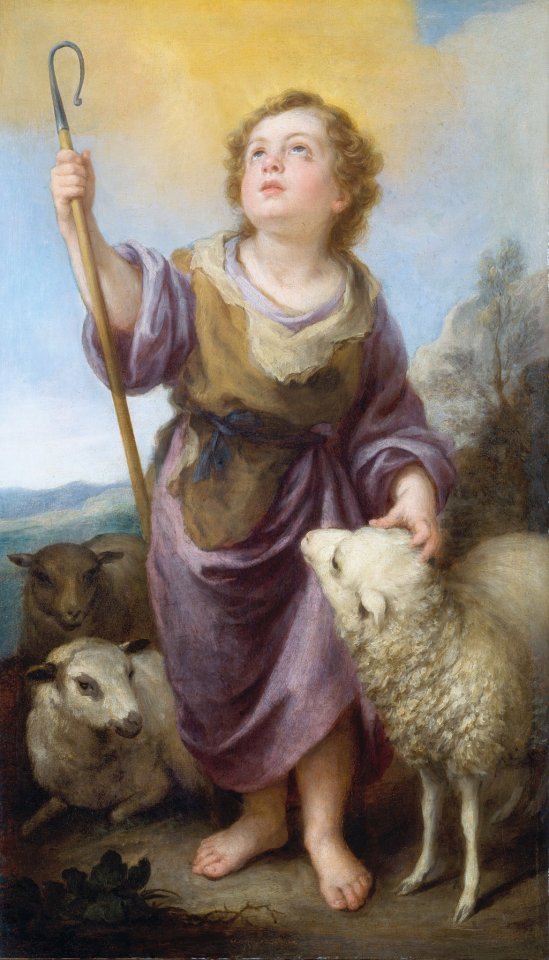
#familiafranciscana#avemaria#hailmary#terciariosfranciscanos#jesus#franciscanos#jesuschristo#sanfrancisco#terciariofranciscano#franciscano
10 notes
·
View notes
Text


"But He! so wretched in his height,
So restless in his wretchedness, must still
Create, and re–create––perhaps he'll make
One day a Son unto himself––as he
Gave you a father––and if he so doth,
Mark me! that Son will be a sacrifice!"
- Cain by Lord Byron
Painting: The Crucifixion by Bartolomé Estebán Murillo
0 notes
Text

Often referred to as the "Santiago Madonna," this painting once belonged to the Marqués de Santiago, whose collection contained many outstanding works by the artist…
Please follow link for full post
Bartolomé Esteban Murillo,Art,Paintings,Bible,Realism,Icons,biography,History,mythology,religion,Zaidan,Jesus,Classical,Icon,footnotes,Christ,
01 Work, Interpretation of the bible, Bartolomé Estebán Murillo's Virgin and Child, with Footnotes #215
#Icon#Bible#biography#History#Jesus#mythology#Paintings#religionart#Saints#Zaidan#footnote#fineart#Calvary#Christ
1 note
·
View note
Text
🎨#ArtIsAWeapon
#ExhibitClosing "Juan de Pareja, Afro-Hispanic Painter" closes at the @metmuseum on July 16. 📍The Metropolitan Museum of Art, 1000 5th Ave, #NYC

Reposted from @metmuseum Before becoming an artist in his own right, Afro-Hispanic painter Juan de Pareja was enslaved in Diego Velázquez’s studio for more than two decades.
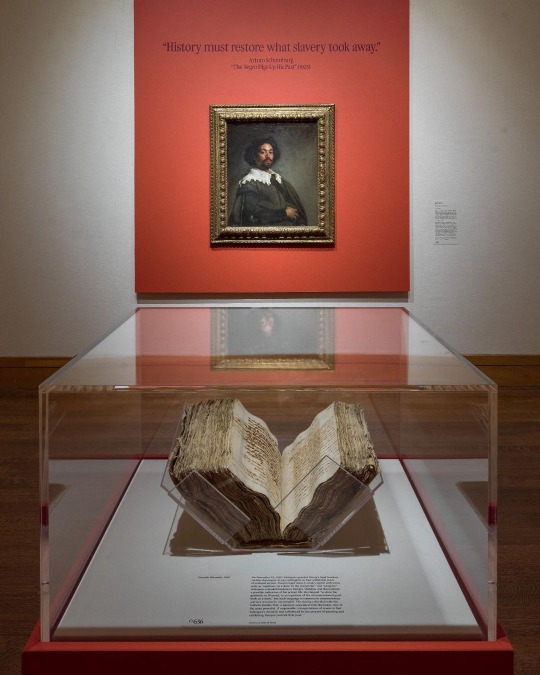
NOW ON VIEW—"Juan de Pareja, Afro-Hispanic Painter" shares an unprecedented look at the life and artistic achievements of Juan de Pareja.



The exhibition tells his story and examines the role of enslaved artisanal labor and a multiracial society in the art and material culture of Spain’s so-called “Golden Age.”



Representations of Spain’s Black and Morisco populations in works by Francisco de Zurbarán, Bartolomé Estebán Murillo, and Velázquez join works that chart the ubiquity of enslaved labor across media.
Visit now through July 16 to experience the first gathering of Pareja’s rarely seen paintings, some of enormous scale, which engage with the canons of Western art while reverberating throughout the African diaspora.
@schomburgcenter Have you seen our founder #ArturoSchomburg’s books, writings, and photos on display @metmuseum? They are part of the exhibition #JuandePareja, Afro-Hispanic Painter.
Mr. Schomburg’s materials offer the framework for discussing the painter. Pareja (c. 1608–1670) was enslaved and worked under famed Spanish painter Diego Velázquez (c. 1599–1660) for over two decades before becoming an artist in his own right.
Mr. Schomburg’s materials were invaluable resources to expand the conversation on Pareja and offers valuable insights on 17th–century Spain. They also provided insight into 17th-century Spain.
Dr. Vanessa K. Valdés, author of Diasporic Blackness: The Life and Times of Arturo Schomburg and associate provost for Community Engagement at The City College of New York, co-curated. Additionally, she wrote the essay “Arturo Schomburg, Juan de Pareja, and Afro-Hispanic Studies” for The Met’s exhibition catalog and served as its co-editor.
Images reposted from @metmuseum
#JuandePareja #MetMuseum #VanessaKValdés #BlackGirlArtGeeks
#Juan de Pareja#Afro-Hispanic Painter#Met Museum#exhibit#exhibit closing#Black Girl Art Geeks#Art Is A Weapon
0 notes
Text
Part 1:
The overarching chronological order in which different art eras began to arise coincide with religion and geography during the given eras, being the reason why certain artistic ideals came to be known as the standard in a respective region. The Renaissance to postmodern art shifts over time, being shaped by spirituality and geography in unique ways as art is produced and the meaning begins to expand, breaking free from the rigid constraints of Eurocentric caliber. Although there are few regions that continued to produce art that was uninformed by colonialism and Eurocentric art ideals, many works were manufactured due to the overwhelming rise of Christianity in the earlier periods. Especially during the Renaissance, with art focusing on humanism, effectively erecting the understructure of the Protestant Reformation. Going further than Christianity, the variety of art in nonwestern and non-European cultures and religions were growing exponentially, unknowingly reaching, in most areas, its peak. Toward the end, however, slowly breaking free from creative constraints in the modern art era.

During the Renaissance, characteristics of art regarding Greek ideals, such as the golden ratio, were brought back into popularity. Thus this focus on linear perspective and proportions became apparent within prominent artists' work at the time. For example, Leonardo Da Vinci's work The Last Supper, 1495–1498, oil on plaster, 15 x 20.10 ft., located in a Monastery in Grazie, Mila, and commissioned by Duke Ludovico Sforza, incorporates the use of linear perspective, emphasizing the illusion of space within the work by illustrating the background of the room decreasing in size. The work also employs value, or chiaroscuro, increasing in darker shade toward the background of the work to further accentuate the depth of the room and ultimately create a three dimensional space. This technique developed later on in the Baroque era, and continues to be employed in art to this day. In the Renaissance, there also came the embracement of religious figures within art, such as how the Greeks often represented their Olympians gods and goddesses. The Last Supper illustrates an event that took place within the Bible-- Jesus tells his apostles that he will be betrayed by one of them, their reactions to this revelation are captured by Da Vinci. The windows in the back of the long room act as a framing device for Jesus, creating a halo effect from the light shining in. Also in this era, art was mostly commissioned by the upper class, whose society essentially revolved around religion, and major themes tended to feature Christian imagery.

The inclination and trend of artwork regarding Christian themes continued, as the reformation began and Protestant people continued to use art as publicity to spread the word of their now reformed Christian beliefs. For example, The Immaculate Conception by Bartolomé Estebán Murillo, c. 1660–1665, oil on canvas, 2.06 × 1.44 m, located in Museo del Prado, Madrid, employs this developing sense of accurate representation, as deemed so by the counter-formation. This included several requirements for the valid depiction of Mary's garments being a certain color- blue or white, as well as mandating that her hands be in a prayer position and being toted around by angels. Other imagery, such as a slight halo, a half moon, lilies, mirrors, and roses would be symbolic of aspects of herself and her story. The representations according to these strict guidelines would also be the major exposure colonized indigenous peoples would’ve had, ultimately developing how they perceived Christianity.
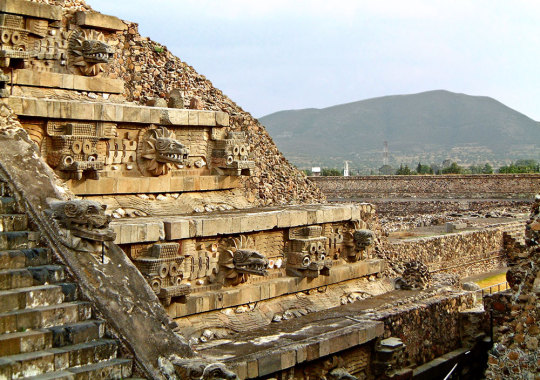
Art and architecture produced pre-colonization includes The Pyramid of the Feathered Serpent, located in the Ciudadela of Teotihuacan, Mexico, first developed in c. 200 CE and expanded in structure size on different occasions, as was common in Mesoamerican architecture like the pyramid structures. In an earlier phase. The artwork produced here was largely informed by geography, unlike in other regions such as Europe where Religion majorly influenced art, seeing as to how the gods in this culture had to do with natural phenomena prone to their climate. In an earlier structure encapsulated within the building is a railing with imagery of feathered serpents, and embellishments associated with the Storm God-- god of war, sacrifice, and fertility-- such as a physical representation in an abstract and highly stylized form giving him a large jaw, eyes inlaid with precious material to give life, and a headdress to communicate his authority. The pairing of the Serpents with the Storm God indicates that geography did inform the subject and production of art, seeing as to how the ancient deities are supposed to represent the two major seasons for the Teotihuacan people-- wet and dry.
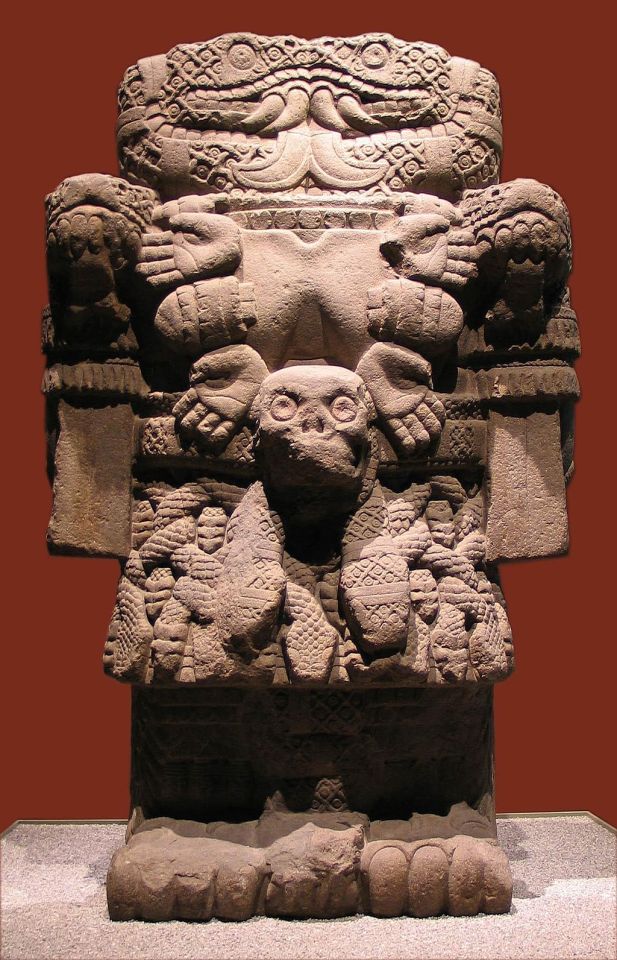
The Teotihuacan people influenced other Mesoamerican cultures, as well, such as the Aztecs. They would worship similar deities often represented in grand scale sculptures, such as The Goddess Coatlicue, c. 1500 CE, Basalt, 8' 6" ft in height. Within this sculpture there is the representation of Coatlicue, who gave birth to Huitzilopochtli, a major Aztec God, presiding over war and the sun. She is shown with an abstract, stylized figure and bird-like feet, as snakes rise from her neck, flanking each side of the symmetrical sculpture, representing blood coming from her neck, forming her head. Around the figure there are hands, organs, and a skull showing offerings given to the Goddess. Overall, the sculptural representation chosen to be depicted was entirely dependent on spirituality.

Another geographical region which went untouched by popularized spirituality like Christianity and maintained culture in the presence of intense colonialism, similar to the Tenochtitlan people, includes Burkina Faso and the Bwa people. For example, the Wood masks, known as nwantantay, range in height from 10 to 25 feet, are made by the Bwa people and adorned by performers in a dance performance called a masquerade, revering and paying respect to passed spirits. Familial aligned groups compete with one another to produce the best mask, often decorated with animals associated with flight or water, birds beaks and elongated parts of the mask representing water serpents, typically linked to security and protection. These performances customarily take place at initiation ceremonies, harvest celebrations, and funerals in the community.

One more work that revolves around spirituality is Cupid And Psyche by Antonio Canova, 1787–1793, marble, 5'1" × 5'8" in height. This work is from the Neoclassical period, which again, similar to the Renaissance, referred back to Greek art ideals. Each respective figure of Psyche and Cupid are shown with idealized proportions, characteristic of Greek and Roman art. The expressions on each figure lack emotion and both are depicted unclothed-- again, signs of Greek and Roman influence. This lack of emotion apparent in their faces is counteracted with the dynamic positioning of the figures, their diagonally placed forms giving natural movement to the sculpture. Even more so, the work was directly inspired by a Roman painting. There is significance in the intimate pose the lovers, according to the mythological story, are in-- perhaps an indication of the nearing Romanticism period.
0 notes
Photo

The Nativity
Bartolomé Estebán Murillo, c. 1665-1670 Oil on Obsidian
60 notes
·
View notes
Photo

Bartolomé Esteban Murillo (Spanish, 1617-1682)
Inmaculada Concepción de los Venerables o de Soult, Detail, c.1660-65
Museo Nacional del Prado, Madrid
#murillo#Bartolomé Estebán Murillo#bartolome esteban murillo#art#fine art#spanish art#spanish#spain#classical art#putti#putto#cherub#cherubs#angel#angels#european art#europe#europa#hispanic
40 notes
·
View notes
Text

Bartolomé Estebán Murillo (Spanish, 1617-1682), Santa Rosa of Lima.
#Bartolomé Estebán Murillo#catholicism#st. Rosa of Lima#baby Jesus#Holy Rosary#catholic saints#sacred art
0 notes
Photo

Archangel Raphael with Bishop Domonte
by Bartolomé Estebán Murillo
#Bartolomé Estebán Murillo#art#artist#painter#Archangel Raphael with Bishop Domonte#Christianity#Raphael#Archangel Raphael#painting#Archangel Raphael with Bishop Domonte by Bartolomé Estebán Murillo
3 notes
·
View notes
Photo

The Nativity, Bartolomé Estebán Murillo, ca. 1665–70, Metropolitan Museum of Art: Drawings and Prints
Purchase, Clifford A. Furst Bequest, by exchange, and Harry G. Sperling Fund, 1995
Size: 10-3/4 x 9 in. (27.3 x 22.9 cm)
Medium: Pen and brown ink, brush and brown wash, over traces of leadpoint or soft black chalk
https://www.metmuseum.org/art/collection/search/336199
12 notes
·
View notes
Photo

The Crucifixion, Bartolomé Estebán Murillo, ca. 1675, European Paintings
Bequest of Harry G. Sperling, 1971
Size: 20 x 13 in. (50.8 x 33 cm)
Medium: Oil on canvas
https://www.metmuseum.org/art/collection/search/437172
16 notes
·
View notes
Photo
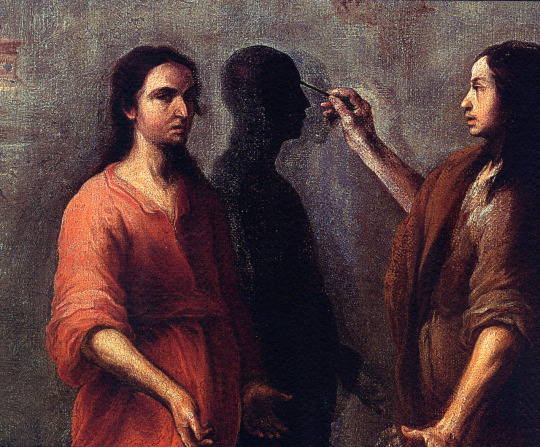
Bartolomé Estebán Murillo, "A Origem da Pintura" (detalhe), circa 1660
#bartolomé esteban murillo#a origem da pintura#barroco#sombra#alteridade#victor stoichita#breve história da sombra
45 notes
·
View notes